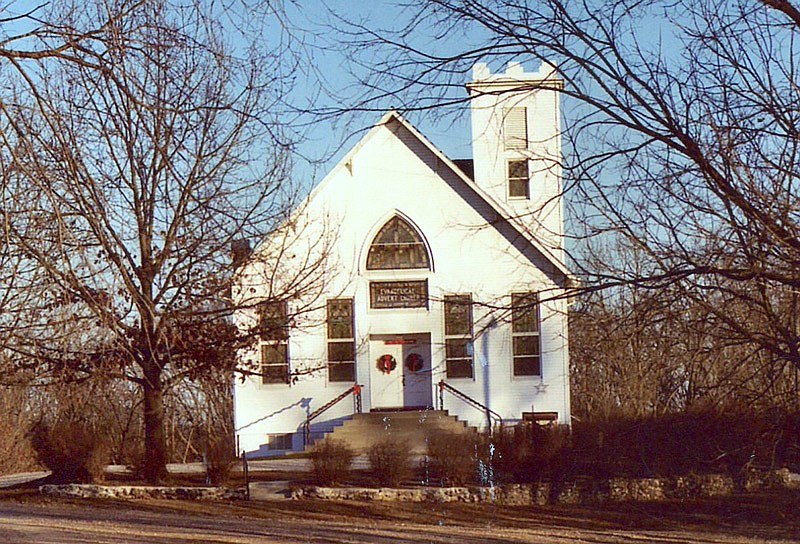An unexpected architectural treasure, the Moniteau Evangelical Advent Church features a castle-like turret children adore and more than a dozen original stained-glass windows cherished by generations of worshippers.
The congregation of about 50 on a given Sunday gather in the third building for the church organized Nov. 19, 1848.
Only about one-fourth of today's congregation are seniors who grew up in the church, according to Sue Burlingame. They enjoy nearly two dozen children and their families attending each week. And families travel from as far away as Boonville, Bunceton and McGirk to worship there. They are led by pastor Steve Watson and his wife, Mary Kay, with pianists Diana Watson and Andrew Rohrbach.
They provide monthly fellowships and quarterly family theme nights, as well as holiday programs and educational programs for youth.
German-Swiss Evangelical pioneers settled in this area of Moniteau County, joining together for informal worship by 1841, according to an artifact in the sanctuary, Burlingame said.
Those original settlers sought economic prosperity and religious and political freedom. "The land they came to was a thicket of brush and timber," the church's 150th anniversary history said.
The first minister to these pioneers, the Rev. Carl Hoffmeister, was sponsored by the Basel Missionary Society of Germany. He traveled from Salem United Church of Christ, McGirk, to preach in the family homes.
Twelve men - whose surnames were Schaaf, Dietzel, Werdtmann, Wachter, Kiesling, Sperber, Knoepker, Bauer, Keil, Geminden and Roedel - formally organized in 1848.
The first church building - a 28-by-30-feet log structure with log benches - was dedicated 11 years later. Sunday school was first held about 1870.
The congregation joined the German Evangelical Synod of North America in 1884.
In 1886, a second church building was built, allowing the first to be used as a parochial school until 1897. School lessons, as well as sermons, were led in German. The parochial school closed in 1918.
Before 1893, the church was a sister congregation to St. Peter's Church, Pleasant Grove, and St. Paul's Church, Jamestown. But the Advent congregation became independent at that time.
The ladies aid society was organized as "The Frauvereins" in 1896, changing their name in 1920 and a couple more times before becoming The Women's Fellowship in 1965.
A six-foot frame house built in 1903 served as parsonage for 63 years, preceded by a log home which served the pastor and his family for about 35 years.
The present church building was completed in 1925, bringing with it the wooden pews and altar seats from the second building.
In 1934, the congregation affiliated with the Advent Evangelical and Reformed Church of the Kansas City Synod.
A cemetery board and permanent fund were established in 1938.
Then, in 1961, another denominational merger created the Advent United Church of Christ, the Missouri Conference.
In 1971, 78 years after the three churches removed their alliances, St. Peter's and St. Paul's joined with Advent to form the Jamestown United Church of Christ Cooperative Ministry. They are now affiliated with the Evangelical Association of Reformed and Congregational Christian Churches.
"Our church is beautiful," Burlingame said. "We welcome you how you are. It has a comfortable feeling to it."

